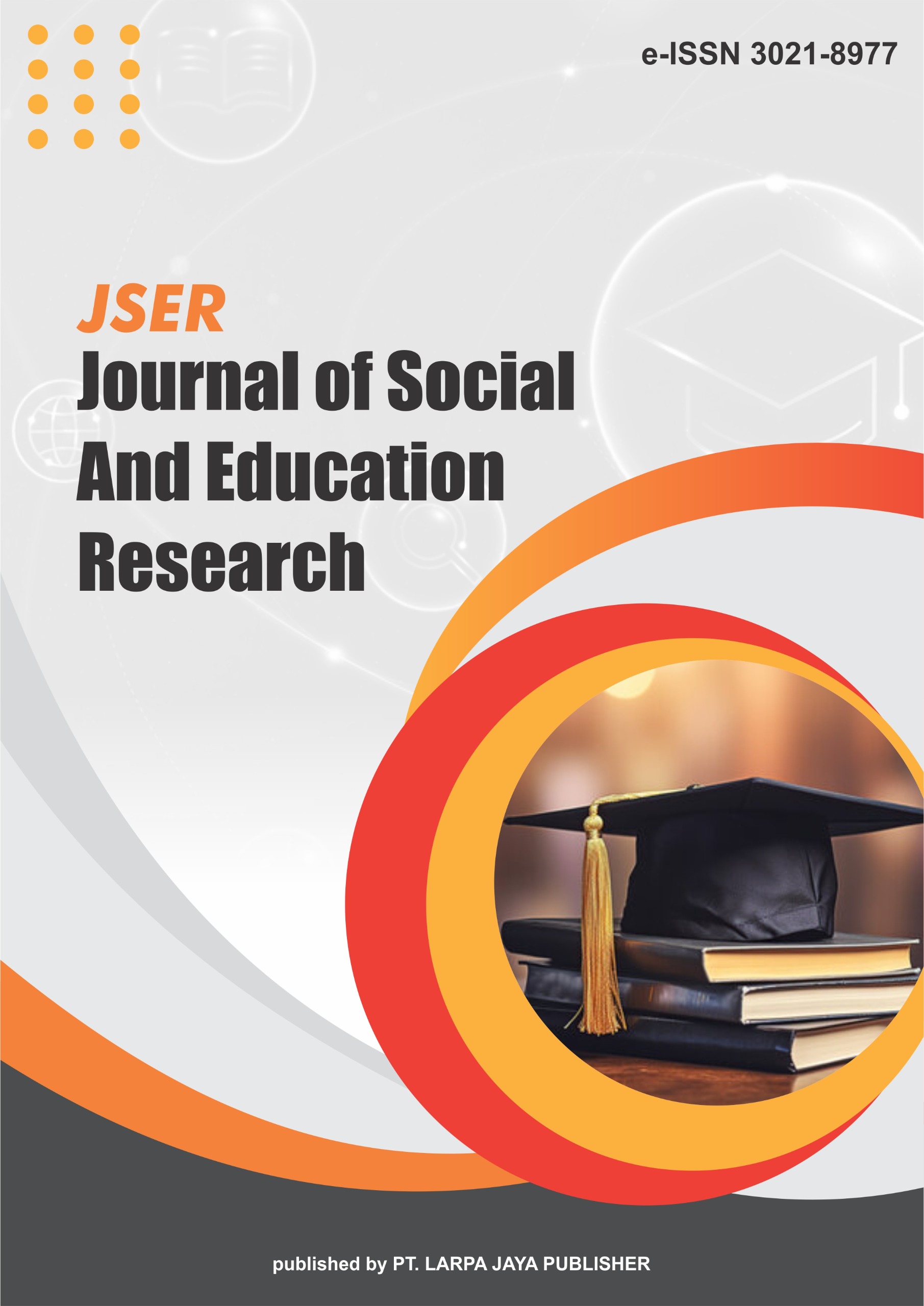Nursing Care for Hyperthermia in Patient Nn. Y.T with Tropical Malaria in the Internal Ward Class III
DOI:
https://doi.org/10.63265/jser.v3i1.150Keywords:
warm compress, malaria, hyperthermia, nursing careAbstract
Malaria is a mosquito-borne disease caused by obligate intracellular protozoa of the genus Plasmodium. It can affect individuals of all ages, particularly those living in areas suitable for mosquito breeding. This study employed a case study design involving one adult patient diagnosed with tropical malaria and experiencing hyperthermia. Data were collected through interviews, observation, and documentation, then analyzed using a systematic process of data collection, data reduction, data presentation, and conclusion drawing. Nursing care focused on managing hyperthermia through the application of warm compresses on affected areas, including the forehead, axilla, and groin. Following the intervention, the patient’s body temperature decreased from 38.2°C to within the normal range. The intervention also contributed to patient comfort, reduced chills, and improved peripheral circulation. These findings indicate that warm compresses are an effective non-pharmacological nursing intervention for reducing elevated body temperature in malaria patients, supporting thermoregulation, enhancing patient comfort, and complementing medical treatment. Implementing timely and appropriate nursing interventions can play a critical role in managing hyperthermia, minimizing complications, and promoting faster recovery in patients with malaria.
References
Aurelia, A. D., Sari, N. R., & Ningsih, T. P. (2022). Efektivitas kompres hangat dalam menurunkan suhu tubuh pada pasien demam. Jurnal Keperawatan Medika, 10(2), 110–118. https://doi.org/10.31289/jkm.v10i2.6543
Chawla, J., Simmons, C., Valente Pires, C., Gibbons, J., & Adams, J. H. (2024). Aggressive antipyretics in central nervous system malaria: Study protocol of a randomized controlled trial assessing antipyretic efficacy and parasite clearance effects (Malaria FEVER study). BMC Infectious Diseases, 24(1), 73. https://doi.org/10.1186/s12879-024-08150-y
Dewani, P. (2020). Konsep dan aplikasi evaluasi keperawatan. Jakarta: Trans Info Media.
Dewi, A. R., & Permatasari, D. A. (2022). Standar Diagnosis Keperawatan Indonesia (SDKI), Standar Intervensi Keperawatan Indonesia (SIKI), dan Standar Luaran Keperawatan Indonesia (SLKI) Edisi 2. DPP PPNI.
Elyta, T., Sembiring, R. J., & Novrita, I. (2023). Efektivitas kompres hangat dalam menurunkan suhu tubuh pada pasien dengan hipertermi di rumah sakit. Jurnal Keperawatan dan Kesehatan Masyarakat, 12(1), 14–20. https://doi.org/10.33856/jkkm.v12i1.1234
Hadinata, A., & Abdillah, J. (2022). Evaluasi tindakan keperawatan berdasarkan kriteria hasil pada pasien demam. Jurnal Ilmu Keperawatan Indonesia, 13(2), 98–104. https://doi.org/10.32584/jiki.v13i2.207
Jannatiyah, A. (2021). Efektivitas kompres hangat terhadap penurunan suhu tubuh pada pasien demam. Jurnal Keperawatan Respati, 9(1), 34–40. https://doi.org/10.22219/jkr.v9i1.15099
Kahi, F. A. (2024). Dasar-dasar keperawatan medikal bedah: Aplikasi praktik klinis. Intan Media Publishing.
Kozier, B., Erb, G., Berman, A., & Snyder, S. J. (2022). Fundamentals of nursing: Concepts, process and practice (10th ed.). Pearson Education.
Maharningtyas, D. R., & Setyawati, R. (2022). Efektivitas terapi kombinasi antipiretik dan kompres hangat terhadap penurunan suhu tubuh pada pasien demam. Jurnal Ners dan Kebidanan Indonesia, 10(2), 85–90. https://doi.org/10.33560/jnki.v10i2.896
Nararif, N., & Kusuma, Y. (2015). Asuhan keperawatan pada klien dengan malaria di ruang interna. Jurnal Ilmu dan Teknologi Kesehatan, 2(1), 45–52.
Olfah, N., & Ghofur, A. (2016). Hubungan pengkajian keperawatan dengan ketepatan diagnosa keperawatan di ruang rawat inap. Jurnal Keperawatan Muhammadiyah, 1(2), 1–8.
Pawestri, D. (2023). Pengaruh kompres hangat terhadap penurunan suhu tubuh pada pasien demam di Puskesmas Madiun. Jurnal Keperawatan Indonesia, 27(1), 30–36. https://doi.org/10.3334/jki.v27i1.937
Potter, P. A., Perry, A. G., Stockert, P., & Hall, A. (2023). Fundamentals of nursing (11th ed.). Elsevier.
Suparti, S., Wulandari, N., & Rahmadani, R. (2020). Efektivitas pemberian kompres hangat dan antipiretik terhadap penurunan suhu tubuh pada pasien malaria. Jurnal Keperawatan Tropis, 8(1), 24–30. https://doi.org/10.1234/jktropis.v8i1.1122
Valente Pires, C., Chawla, J., Simmons, C., Gibbons, J., & Adams, J. H. (2023). Heat shock responses: Systemic and essential ways of malaria parasite survival. Current Opinion in Microbiology, 73, 102322. https://doi.org/10.1016/j.mib.2023.102322
Vera, M. (2024). Fever (pyrexia) nursing diagnosis and care plan. NurseStudy.net. https://nursestudy.net/fever-nursing-diagnosis/
Windawati, W., & Alfiyanti, D. (2020). Penurunan hipertermia pada pasien kejang demam menggunakan kompres hangat. Ners Muda, 1(1), 59.
Wood, L., Cheng, J., & Prasad, M. (2023). Fluid loss and hydration strategies in febrile illness: A clinical update. Journal of Tropical Health, 19(2), 88–95. https://doi.org/10.1016/j.jtrop.2023.04.006
World Health Organization. (2023). Guidelines for the treatment of malaria (4th ed.). WHO. https://www.who.int/publications/i/item/9789240069882
Downloads
Published
How to Cite
Issue
Section
License
Copyright (c) 2025 Journal of Social And Education Research

This work is licensed under a Creative Commons Attribution-NonCommercial 4.0 International License.










